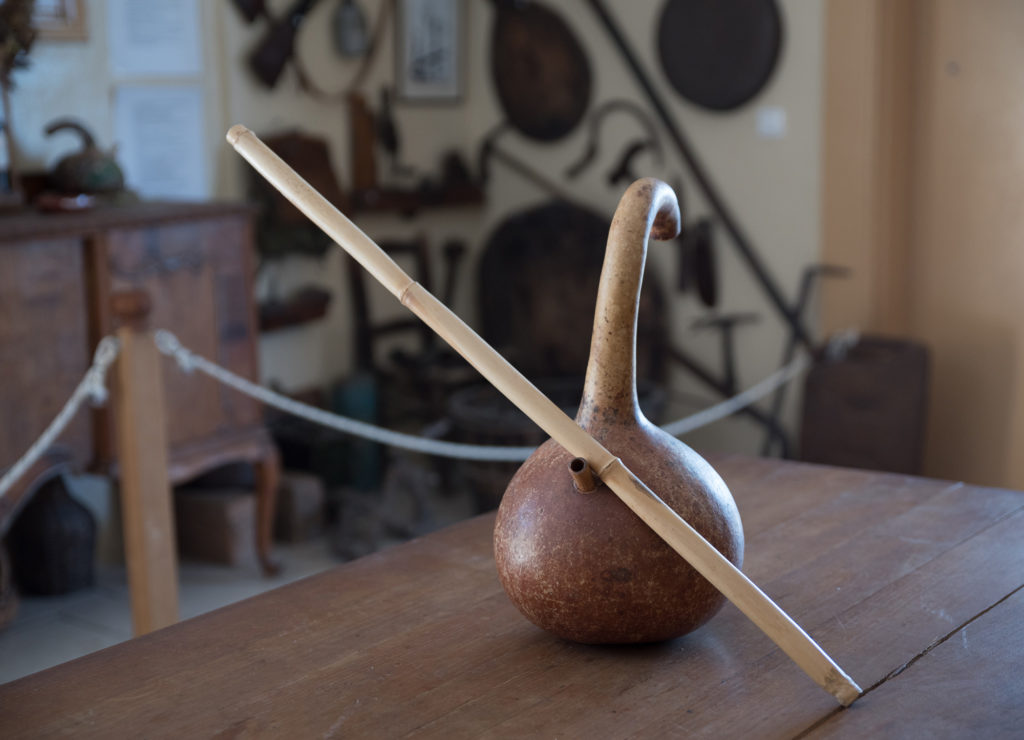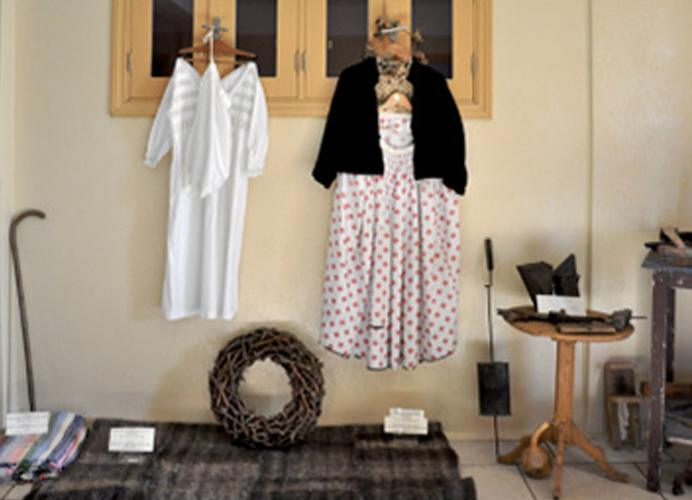In order to preserve, revive and present to our visitors the local culture of wine and Ikaria we have created a gallery containing asignificant collection of artifacts, tools and utensils from everyday life ofIkaria in the past. A large part of the gallery is dedicated to the wine and wine lore, as wine has always been associated to the island’s life, being present in all social events and gatherings, weddings, christenings and even after memorial services in church.
Some remarkable items in our Gallery are:
- The “kerastari”, a three-nozzle terracotta jug for pouring wine at the dinner table, dating from the 17 th century.
- The “foresia”, a bridal dress of the 19 th century, characteristic sample of the thrifty way of life of the Ikarians during that period.
- The “melokoumpi”, a clay honey jar with a water channel around the rim to protect the honey from ants.
- The “pitharia” or “vitynes”, hand-made wine jars which were buried upright in the ground and covered with flat stones placed on their tops.
After the press, the wine was poured into these jars to ferment and mature. As it goes, it was this method of wine making, in combination with the Fokiano and Begleri varieties and the particularly favorable soil, which endowed Ikaria’s wine with the oldest in the world geographical indication: the renowned “Pramnian Wine”.
- The “sifouni” and the “avli”, an emptied, cleaned and dried gourd with a hollow cane adjusted to it. This device worked like a siphon and it was used to pump wine out of the jars. As these items are most typical of the island’s old wine culture, we have chosen them to figure in our Winery’s logo.
Various tools and utensils of everyday life which were used in:
- the household: mainly hand-made utensils from local clay, such as the “tsoukali” (cooking pot), the “pyromachia” (stones placed in the fireplace to hold the cooking pot or the grill), the “kioupi” (special vase for storing dried figs and currents), the “ladokoumpi” (jar for olive oil), the “kavourdistiri” (grinder and roaster), the “pinakoti” (wooden set of molds used in bread-making), “malachtare” (round wooden board for kneading bread dough), the “psomoftiaro” (peel made of carved wood for sliding loaves of bread into or out of the oven), the “kampas” (large heavy blanket made of goat yarn for protection against the cold), the “cheromilos” (hand mill made of two round stones, used for grinding grain) and the “sichla” (container like a canteen for carrying food out of the house).
- bee keeping: hand-made tools and containers from clay or straw, such as the “kapnistiri” (smoker for calming honey bees), the “chastri” (earthen beehive) and the “smarologos” (basket with a special shape used for capturing migrating swarms in the forest).
- agriculture: iron tools, such as the “aletri” (plough), the “dikeli” (pointed ground breaker), the “axina” (mattock).
- carpentry: tools made by local ironsmiths, such as the “tripani” (hand drill), the “skarpelo” (gouge), the “alfadi” (level) and the “kourliasti” (large hand saw for cutting tree trunks).
We are waiting for you in the Folklore Gallery we have created in our Winery with a lot of love and artistry, to offer you a tour in Ikaria’s wineculture, history and everyday life in the good old times.


